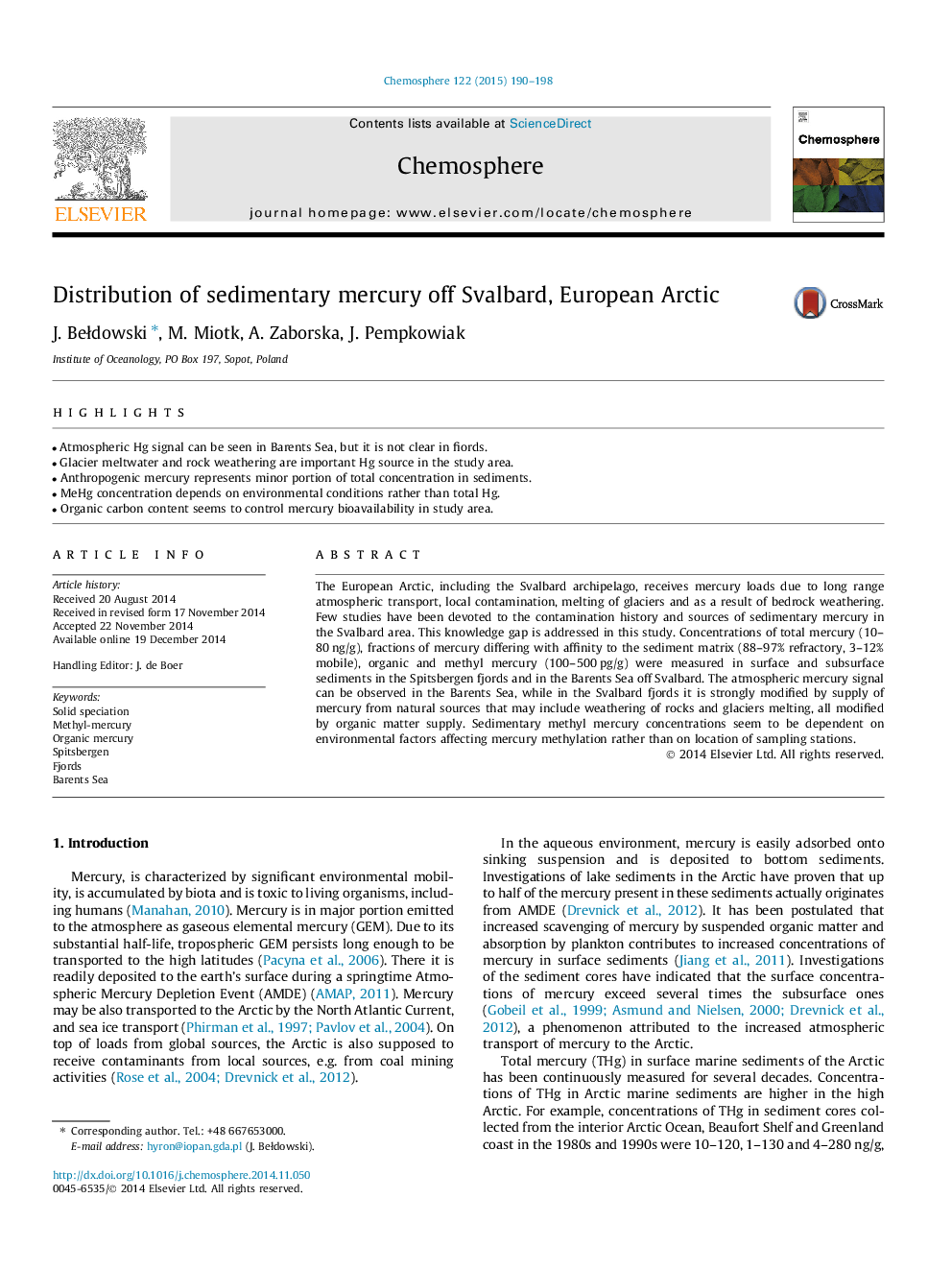| کد مقاله | کد نشریه | سال انتشار | مقاله انگلیسی | نسخه تمام متن |
|---|---|---|---|---|
| 4408392 | 1618849 | 2015 | 9 صفحه PDF | دانلود رایگان |
• Atmospheric Hg signal can be seen in Barents Sea, but it is not clear in fiords.
• Glacier meltwater and rock weathering are important Hg source in the study area.
• Anthropogenic mercury represents minor portion of total concentration in sediments.
• MeHg concentration depends on environmental conditions rather than total Hg.
• Organic carbon content seems to control mercury bioavailability in study area.
The European Arctic, including the Svalbard archipelago, receives mercury loads due to long range atmospheric transport, local contamination, melting of glaciers and as a result of bedrock weathering. Few studies have been devoted to the contamination history and sources of sedimentary mercury in the Svalbard area. This knowledge gap is addressed in this study. Concentrations of total mercury (10–80 ng/g), fractions of mercury differing with affinity to the sediment matrix (88–97% refractory, 3–12% mobile), organic and methyl mercury (100–500 pg/g) were measured in surface and subsurface sediments in the Spitsbergen fjords and in the Barents Sea off Svalbard. The atmospheric mercury signal can be observed in the Barents Sea, while in the Svalbard fjords it is strongly modified by supply of mercury from natural sources that may include weathering of rocks and glaciers melting, all modified by organic matter supply. Sedimentary methyl mercury concentrations seem to be dependent on environmental factors affecting mercury methylation rather than on location of sampling stations.
Journal: Chemosphere - Volume 122, March 2015, Pages 190–198
